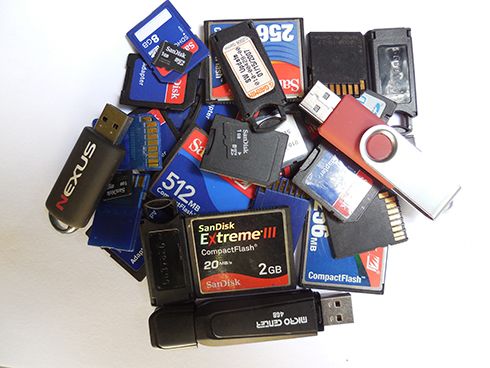We all know the guy who updated his trusty chartplotter and lost all the waypoints he’d saved over years. I don’t want to be him. I don’t want YOU to be him. But I also don’t want to be wandering the ocean with an antiquated and possibly bug-ridden device. Updating our software doesn’t just fix bugs and ensure our electronics are operating correctly; it expands the equipments functionality. Updates to the multifunction displays we are currently testing at Practical Sailor have enabled a range of new functions, including an ability to integrate with some handy i0S and Android applications. Keeping up with updates also helps avoid the rare glitches that can occur when you leap-frog several updates by replacing a very early software versions with the latest and greatest.
In the May 2015 issue of Practical Sailor, contributing writer Bill Bishop, a marine electronics technician who also blogs at the Marine Installers Rant, digs into the confusing topic of secure digital (SD) media cards and card readers, the media storage devices that you’ll need to carry out upgrades on most multifunction devices. Once you’ve downloaded the latest software update from the manufacturer onto the appropriate media card (finding the right one is often easier said than done), it’s time to go to the boat and install it.
Bishop, who has carried out hundreds of updates in his lifetime, offers a few tips on doing it right.
- Read the instructions! Download and carefully read the update instructions before you start the software upgrade process, not in the middle of it when it too late. Print out a copy of the instructions and take it with you to the boat when you do the upgrade.
- It is critical that you save all of your data such as waypoints, routes, and tracks on a separate SD card before you do the software update. There can be scenarios where the updated system will require you to do a factory reset as part of the update process, and this will erase all of your data. It’s always a good idea to save your data first anyway. The backup process is usually straightforward and described in your devices owners manual. When in doubt, contact the maker or check their website for technical support.
- Before doing an update, turn on all equipment linked to the system (this includes autopilots) if they are of the same brand as the multifunction function display. This allows the update of other system components attached if possible.
- Be patient. Many software updates are approaching 2 GB in size and updates can take considerable time on some occasions.
- Never interrupt a software update. If you think something has gone awry, contact the manufacturer’s customer support department for assistance. Don’t start pushing buttons or remove a card during an update or your operating system may become corrupted. Once the system is corrupted, you will likely have to send the system to the manufacturer for repair-usually at your own expense.
- Keep up with software updates. As we’ve already mentioned, these updates enable new features for your system, and fix known bugs. If update problems do occur (and this is not often), we’ve found that it’s more likely to happen when going from very early versions of the software to the newest, so in the long run it is easier to keep up with each new update.







































